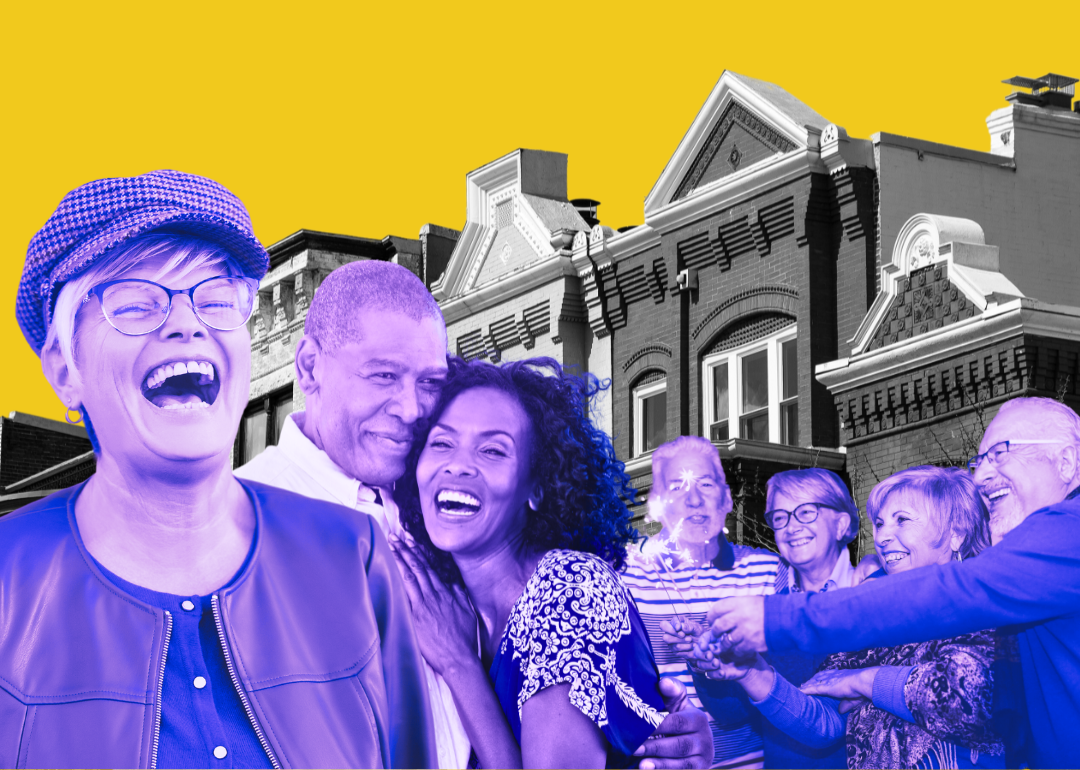
Boomers are hoarding all the houses
The two-and-a-half-year real estate rollercoaster has calmed in 2023, at least somewhat, as more Americans decide to stay put.
"The big story for the last couple of months has been lack of inventory due to mortgage rate lock-ins," Redfin chief economist Daryl Fairweather said. "Now that rates are above 7%, it doesn't make sense for a lot of people to sell."
Lack of inventory is the main culprit behind the affordable housing crisis. The reasons behind this are complex, including a construction worker shortage. But another factor is at play: Older Americans are staying in their homes longer and buying more homes than ever. Essentially, they're hoarding the few homes that might otherwise be available and driving up prices on the ones that are.
Stacker analyzed data from the Federal Reserve, the National Association of Realtors, and other sources to show how the baby boomer generation affects housing affordability in the U.S.
This past spring, the number of homes changing hands dropped to the lowest levels since the start of the pandemic and has barely budged. Yet prices remain high, as the total number of homes for sale hit the lowest level on record in July, according to Redfin.
Prohibitive asking prices and record-high mortgage rates keep many potential buyers out of the market. But older Americans who have been in the real estate game longer have more equity and, therefore, more cash to spend.
In the first quarter of 2023, people born between 1946 and 1964 had $18 trillion in real estate assets, more than three times the value held by millennials, those born between 1981 and 1996, who held about $5 trillion worth, according to the Federal Reserve.
"If you're retired and you paid off your mortgage or close, it's easy for you to stay put, but it's also easy for you to cash in and have a different lifestyle," Fairweather said. "The equity makes it so they have two really good options: They can stay and have low mortgage payments, but they also have this other great option where they can cash in their equity if they're able to move to somewhere more affordable or downsize."
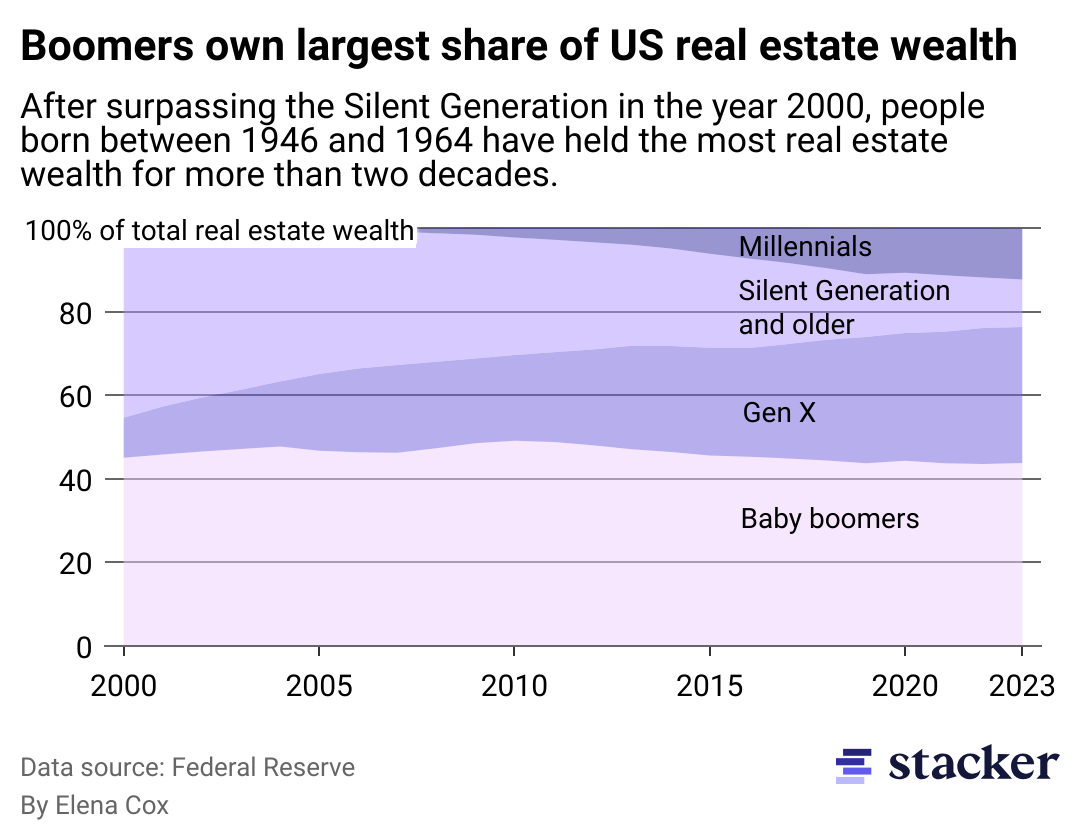
Boomers hold the largest share of real estate wealth
Boomers, born between 1946 and 1964, have controlled the lion's share of the real estate market for nearly a quarter of a century. This feat is impressive for a group that isn't even the largest generation by population.
In 2000, when boomers were between 36 and 54, they owned roughly the same amount of real estate as their parents' generation did at that time in their lives. Since then, boomers have held on to their real estate wealth as the Silent Generation divested or died. In part, that's because they were able to buy their first homes earlier, allowing more time to build that equity.
Close to a third of baby boomers owned their home when they were 25, compared to 27% of Gen Xers and 28% of millennials when they were that age, according to Census Bureau data analyzed by Redfin. Gen Z has it slightly better, with 30% of 25-year-olds owning their homes in 2022—though 40% of them got help from their parents, some of whom are boomers.
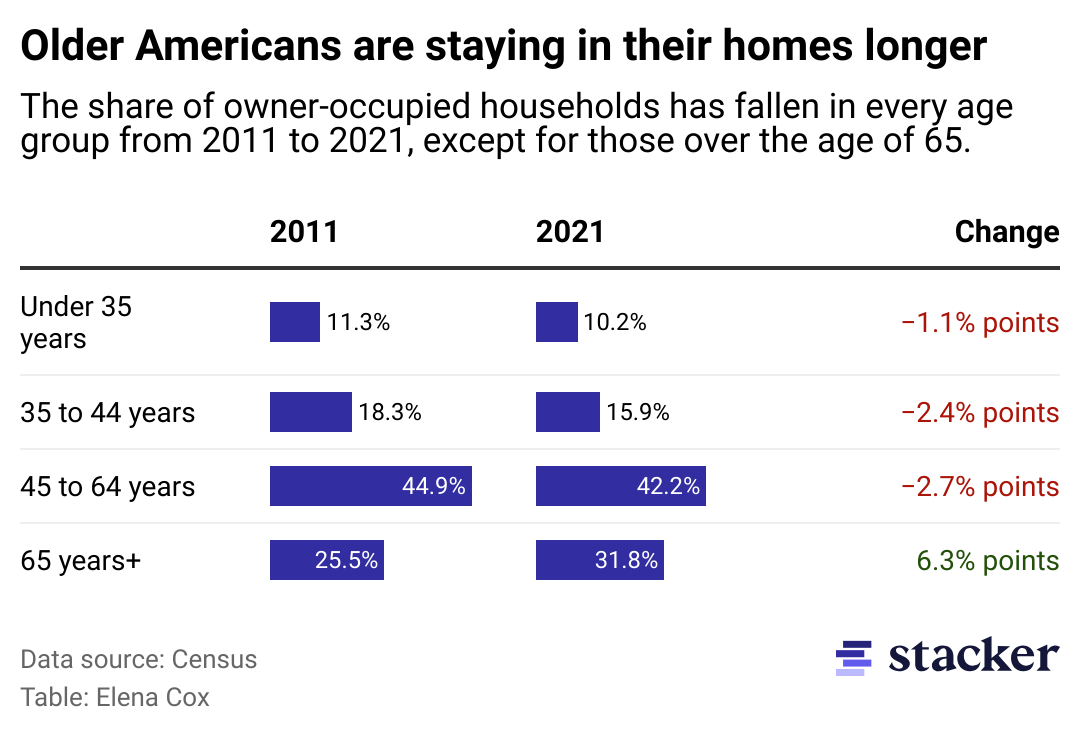
They own more homes than a decade ago
Americans—especially white, wealthy, and educated ones—are living longer. Today, boomers are between the ages of 59 and 77.
"Part of why people are staying in their houses longer is because they're healthy enough to do it," said Maureen Henry, deputy director of the International Longevity Center-USA at Columbia University.
The vast majority of older Americans prefer to remain in their homes for as long as possible. Nearly 90% of adults between the ages of 50 and 80 say it is important for them to age in place, according to a 2022 University of Michigan survey.
"Nobody wants to live in a nursing home," Henry said.
In 2011, when boomers were between the ages of 47 and 65, they owned about 2 in 5 homes, according to Census Bureau data. A decade later, not much has changed.
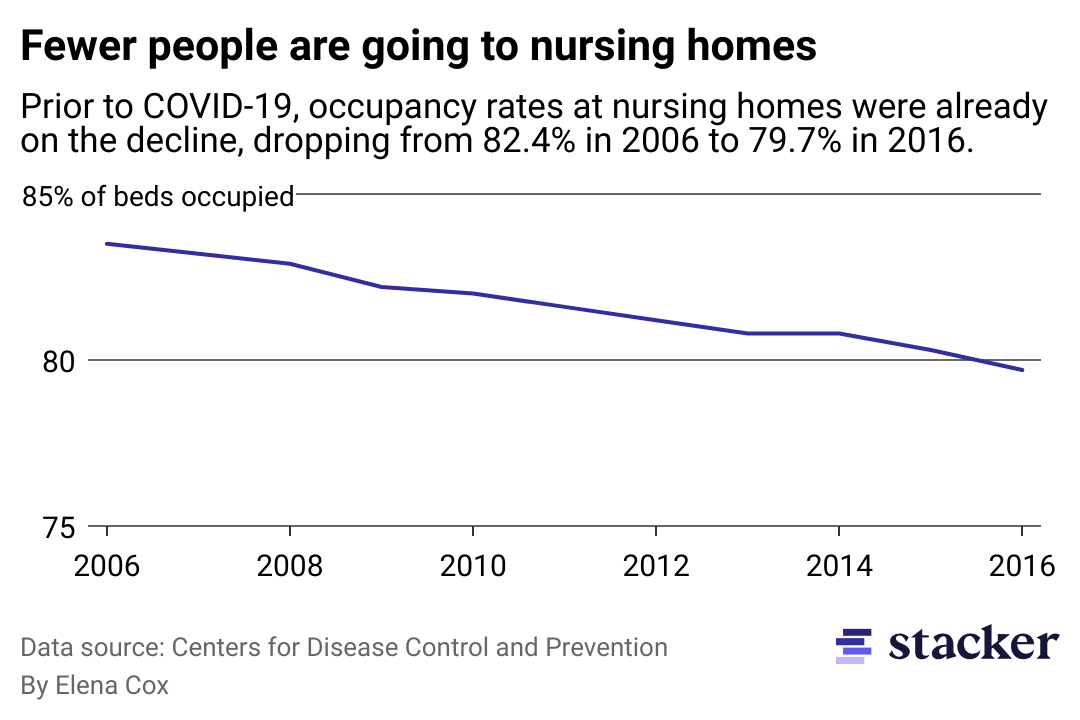
Nursing homes lose favor
The COVID-19 pandemic highlighted the potential dangers of institutional living. (As of Aug. 20, 167,922 nursing home residents have died from the virus, according to CDC data.) But even before then, the stigma was growing.
Besides that, long-term care is also expensive. The median cost of a semi-private room in a nursing home facility is about $95,000 per year, according to American Health Care Association and the National Center for Assisted Living. For comparison, assisted living communities typically cost around $54,000 per person annually.
Private insurance and Medicare cover a finite number of days in skilled nursing facilities, usually used after hospital stays. Only low-income people who require high levels of care are eligible for Medicaid, which covers 60% of the current nursing home population.
Instead, aging adults are opting for independent living communities, which offer assisted living amenities but allow for autonomy and privacy.
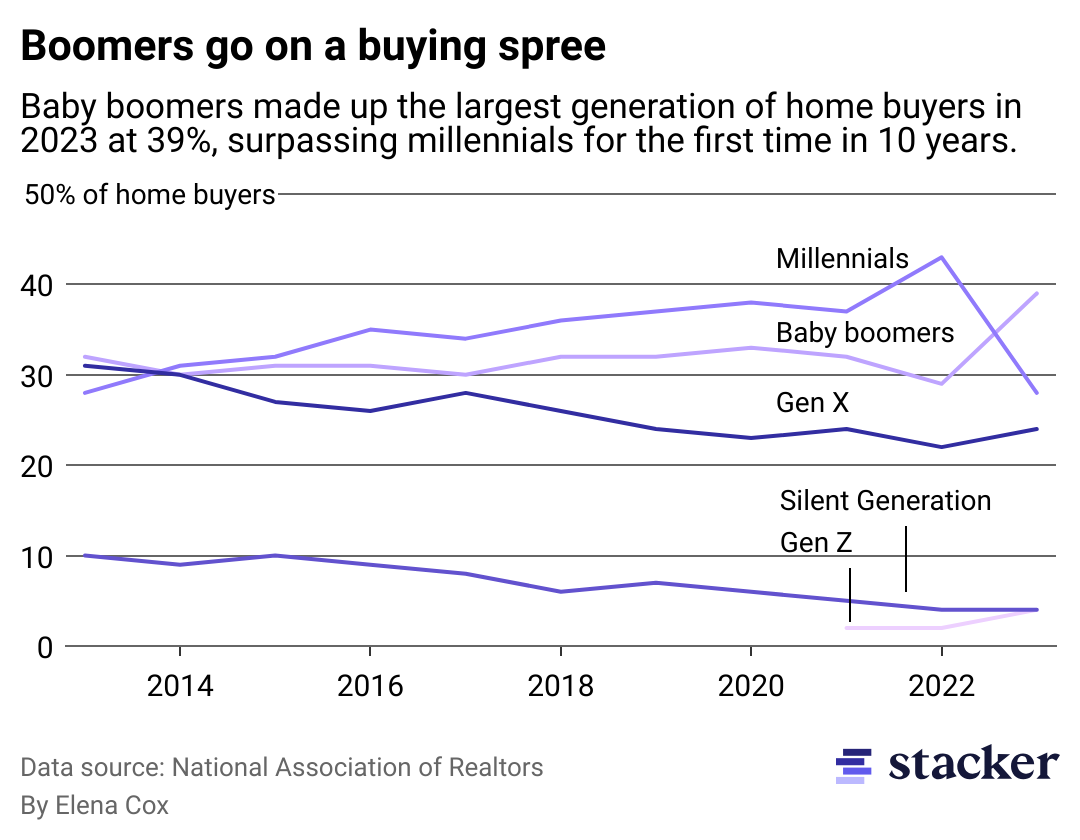
Boomers go on buying spree
Not only are the boomers hanging on to what they have longer than in the past, but they're also buying more homes than other generations. Over time, the Silent Generation has declined as a share of overall buyers—as have Gen X, who are in their more stable, child-rearing years.
Bucking the trend, the share of boomer buyers spiked from 2022 to 2023.
While some are downsizing to more manageable homes, others are becoming snowbirds and owning separate homes for the summer and winter months. Still others are deciding to try their hands at real estate investing, scooping up homes to use as rentals. (But becoming an Airbnb host may not be the easy passive income many had hoped.)
Cost is top of mind for buyers of all ages, and with a limited number of affordable homes available, they're all competing for the same places. The difference is boomers buying a condo in Tampa or a casita in Scottsdale can usually pay full price in cash, unlike first-time buyers, who may have been saving up for a down payment for years and are limited by the size of their home loan.
"The root problem is lack of supply, specifically of starter homes. The 'missing middle' entry point into the market has gone away," Fairweather said, referring to homes larger than an apartment but smaller than a single-family home, such as duplexes or townhomes.
Those homes, traditionally built for first-time buyers, are also attractive to older adults living on a fixed income.
"Most people don't have enough in savings to support themselves for an indefinite number of years," Henry said. "[They] have to make decisions for risk."
Story editing by Jeff Inglis. Copy editing by Kristen Wegrzyn.



